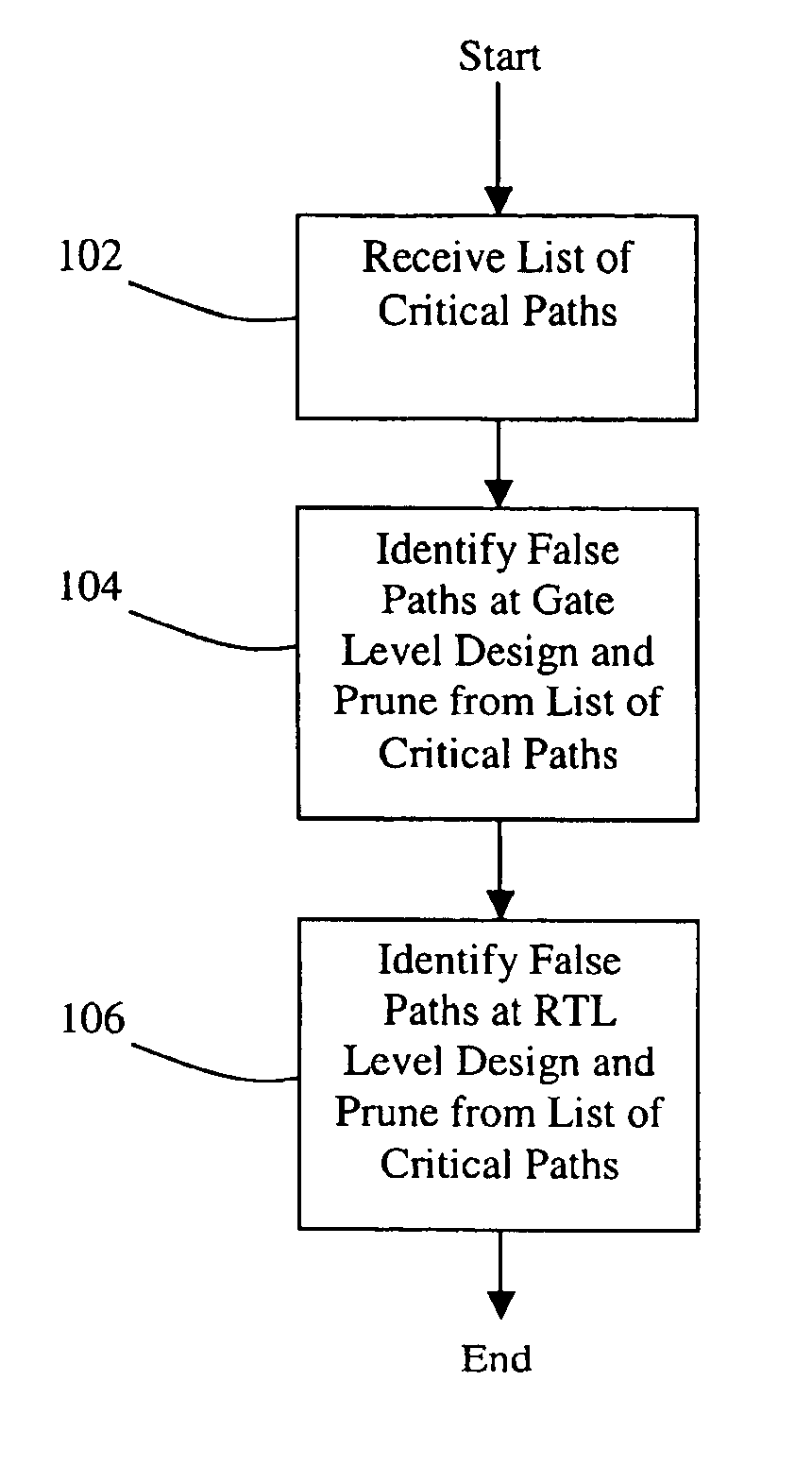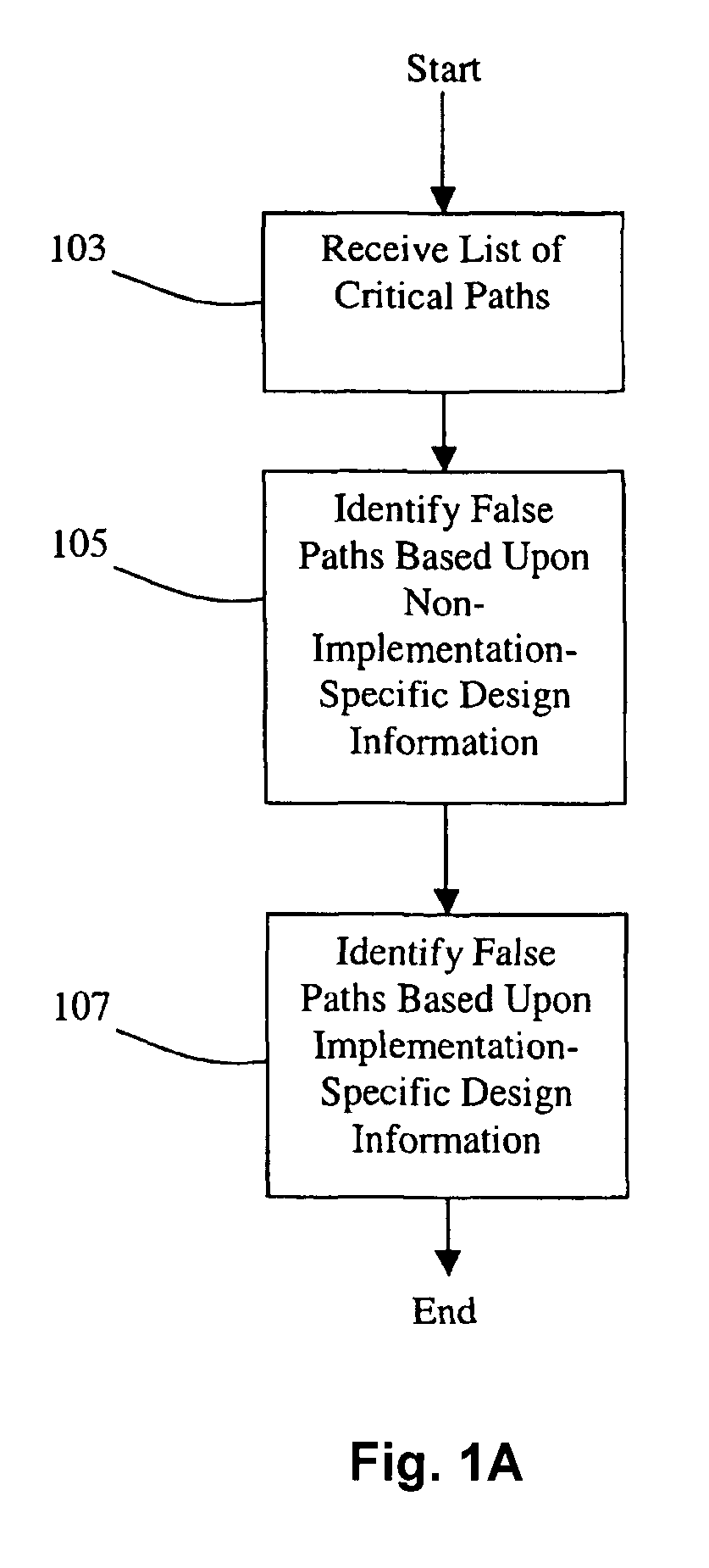Method and system for false path analysis
a false path and analysis method technology, applied in error detection/correction, program control, instruments, etc., can solve the problems of insufficient optimal component configuration and size, significant time and system resources that may need to be expended, and the generation of false path constraints for a typical design can take several weeks to several months, so as to improve the accuracy of identifying false paths and reduce the amount of manual effort. , the effect of accurate identifying the set of critical problems
- Summary
- Abstract
- Description
- Claims
- Application Information
AI Technical Summary
Benefits of technology
Problems solved by technology
Method used
Image
Examples
Embodiment Construction
[0019]The present invention provides a method and system for performing false path analysis to accurately identify the set of critical paths that must be addressed in a circuit design. One advantage of identifying false paths (FPs) is that this identification can be used to reduce the number of critical paths that must be analyzed, redesigned, and / or modified to meet the given timing requirements for a circuit design.
[0020]FIG. 1A shows a high-level flowchart of a process for performing false path analysis according to an embodiment of the invention. At 103, the process receives an initial list of one or more critical paths for the circuit design. The list of critical paths can be generated, for example, using a static timing analysis tool. By analyzing each critical path, it can be determined if the path is real or false (false paths) in the context of the design's architectural design data (also referred to as architectural information).
[0021]At 105, the process identifies a set o...
PUM
 Login to View More
Login to View More Abstract
Description
Claims
Application Information
 Login to View More
Login to View More - R&D
- Intellectual Property
- Life Sciences
- Materials
- Tech Scout
- Unparalleled Data Quality
- Higher Quality Content
- 60% Fewer Hallucinations
Browse by: Latest US Patents, China's latest patents, Technical Efficacy Thesaurus, Application Domain, Technology Topic, Popular Technical Reports.
© 2025 PatSnap. All rights reserved.Legal|Privacy policy|Modern Slavery Act Transparency Statement|Sitemap|About US| Contact US: help@patsnap.com



